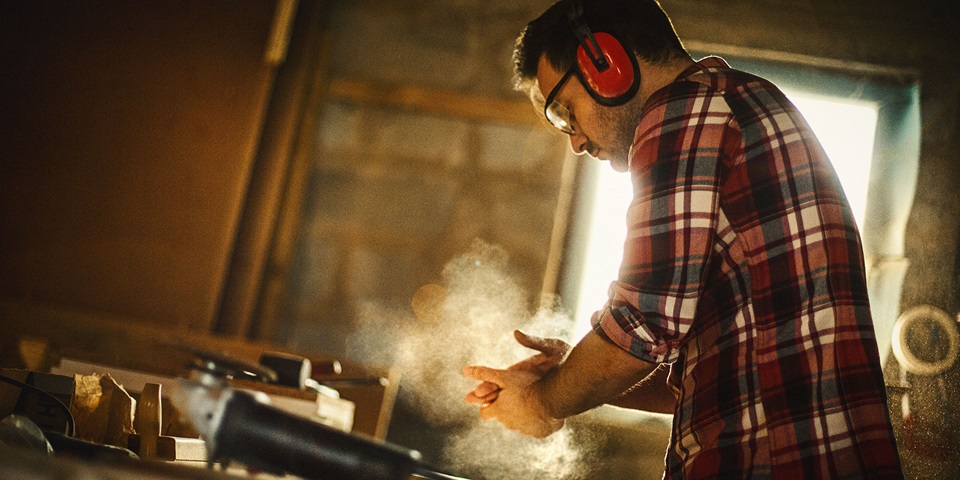
23 Sep Preparing for the new dust exposure limits: need to know
Safe Work Australia has just released new guidelines on silica dust exposure, with limits cut to 0.05 milligrams per cubic metre within three years.
It also has insurance implications, says Michael White, Steadfast’s broker technical manager. Any industries that involve working with stone, cement and other similar materials potentially expose workers to the risk of silicosis. As Safework NSW’s web site explains, when these materials are cut, sanded or drilled, they potentially produce a fine dust, which can cause the serious lung disease.
The body has published a list of activities that may contribute to this disease. They include:
- Installing stone countertops
- Excavation, earth moving and drilling
- Paving and surfacingMining and quarrying
- Tunnelling
- Construction labouring activities
- Brick, concrete or stone cutting using dry methods
- Angle grinding, jack hammering and concrete chiselling
- Pottery making
“This is a workers’ comp issue,” says White. Workers’ compensation insurance is administered on a state-by-state basis and there is significant variation between the states when it comes to this type of cover. This is something for building firms to keep in mind. “But if someone is not an employee and they’re working as a contractor and making a claim against the person they’re working for, the claim would be made against the business’s public and products liability policy,” he adds.
“It’s also important to monitor the health of staff and contractors and also monitor the air to check for dust-borne particles”
White says typically, claims made against this policy tend to be large and involve litigation. There are also complexities around this situation, he adds.
“Contractors tend to work for many different businesses and it can be hard to assess where someone contracted silicosis. Additionally, businesses with exposure to contractors who may have contracted silicosis as part of their relationship with them need to ensure their insurance covers claims against them by contractors,” he adds.
This is important, as many policies issued to businesses involved in the building industry include exclusions if the person making the claim is a contractor or someone employed under a labour hire arrangement.
It’s also prudent for businesses facing the risk of claims associated with silicosis to put in place proper risk mitigation strategies to reduce the risk of this disease affecting anyone who comes into contact with their business.
WorkSafe Victoria has a range of different ideas for helping businesses reduce the risk of silicosis affecting their staff and contractors.
- Using wet methods when cutting concrete and similar.
- Using exhaust ventilation such as booths, extraction hoods or tools fitted with extraction.
- Working as closely as possible to the extraction point and using a turntable or bench so tradespeople can direct dust towards the extraction point.
- Using HEPA filtered (Dust Class H) vacuum cleaners next to where the dust is made.
- Pre-cutting materials to minimise dust when working offsite.
- Using respirators (fitted with at least a P1 filter).
There are also steps businesses can take to reduce exposure to dust when cleaning up such as vacuuming dusty work clothes before leaving work or dusting them off wearing a respirator. Washing clothes at work also reduces the risk of taking dust home.
It’s also important to monitor the health of staff and contractors and also monitor the air to check for dust-borne particles.
As this shows, while insurance is an important element when it comes to silicosis risk mitigation, it’s also important to take practical steps to reduce the risk of this disease impacting people over time.
Important disclaimer – Steadfast Group Limited ABN 98 073 659 677, its subsidiaries and its associates.
The views expressed are those of the author only and do not necessarily reflect those of Steadfast.
This magazine provides information rather than financial product or other advice. The content of this magazine, including any information contained on it, has been prepared without taking into account your objectives, financial situation or needs. You should consider the appropriateness of the information, taking these matters into account, before you act on any information. In particular, you should review the product disclosure statement for any product that the information relates to it before acquiring the product.
Information is current as at the date articles are written as specified within them but is subject to change. Steadfast, its subsidiaries and its associates make no representation as to the accuracy or completeness of the information. Various third parties, including Know Risk, have contributed to the production of this content. All information is subject to copyright and may not be reproduced without the prior written consent of Steadfast Group Limited.
Important disclaimer – Watkins Insurance Brokers Pty Ltd ABN 23 059 370 455, AFSL 244427.
The views expressed are those of the author only and do not necessarily reflect those of Watkins Insurance Brokers Pty Ltd.
This magazine provides information rather than financial product or other advice. The content of this magazine, including any information contained on it, has been prepared without taking into account your objectives, financial situation or needs. You should consider the appropriateness of the information, taking these matters into account, before you act on any information. In particular, you should review the product disclosure statement for any product that the information relates to it before acquiring the product.
Information is current as at the date articles are written as specified within them but is subject to change. Watkins Insurance Brokers Pty Ltd make no representation as to the accuracy or completeness of the information.
This article has been reproduced with the consent of Steadfast Group Limited.
Source: – https://www.steadfast.com.au/well-covered/insurance-for-growing-business/preparing-for-the-new-dust-exposure-limits-need-to-know

